Tom's Guide Verdict
This Sony home cinema amp has 360 Spatial Sound Mapping for flexible speaker placement, but connectivity can be bettered elsewhere at the price.
Pros
- +
Flexible 360 Spatial Sound Mapping wizardry
- +
Impressive sound
- +
360 Reality Audio compatible
- +
Dolby Atmos and DTS:X
Cons
- -
Only two HDMI inputs support 4K 120Hz
- -
Build quality feels a bit cheap
Why you can trust Tom's Guide
Price: $900 / £999 / AU$1,699
Colors: Black
Ports: HDMI, Digital Optical Audio, Digital coaxial audio, analogue stereo, Ethernet, USB
Audio channels: 7 (5.1.2)
Audio formats: Dolby Atmos, Dolby Digital, DTS:X, DTS, PCM, 360 Reality Audio
Power output: 7x 85W
Wireless: Wi-Fi, Bluetooth, Apple Airplay
Smart assistant: Works with Sonos, Google Chromecast, Spotify Connect
Dimensions: 16.9 x 13 x 6.1 inches (wxdxh)
Weight: 20 pounds
The STR-AN1000 is a 7.2ch AV receiver, which is not only Dolby Atmos and DTS:X enabled but it supports native 360 Reality Audio, and also boasts 360 Spatial Sound Mapping.
The latter is particularly interesting as it can be applied to stereo sources to create a surprisingly convincing multichannel effect, and overlaid on native immersive audio formats like Dolby Atmos, to virtually enhance the soundstage.
This new Sony also supports DSD (Direct Stream Digital) native music playback, and has 4K 120Hz and 8K HDMI passthrough, although read on for caveats.
The STR-AN1000 AV receiver is also available as the TA-AN1000 AV amplifier in the U.K.
For this review, I listened to the UK and European amplifier iteration. Read on to see how it performed and to discover if it makes the grade to rank as one of the best AV receivers around.
Sony STR-AN1000/TA-AN1000 review: Price and availability
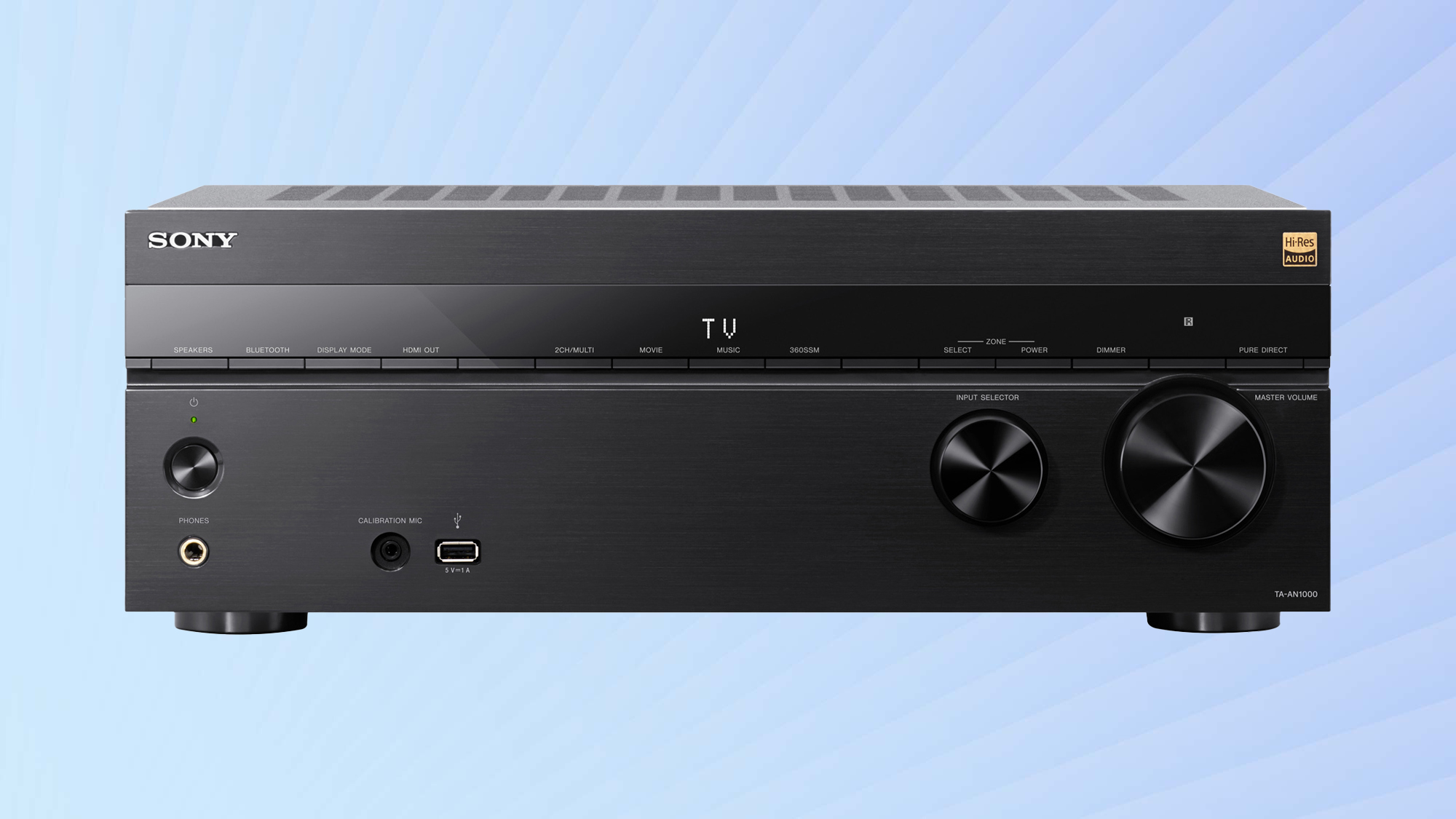
The TA-AN1000 home theater amp is a U.K. and European exclusive. In the U.S. and Australia, you’ll find the STR-AN1000, which distinguishes itself from the TA-AN1000 by including an FM tuner, so it's an AVR rather than an AV amplifier.
The STR-AN1000 sells for $999 / AU$1,699 and can be purchased directly from the Sony store. In the U.K., the receiver-less TA-AN1000 sells for £999, and can be purchased directly from sony.co.uk.
Sony STR-AN1000/TA-AN1000 review: Specifications
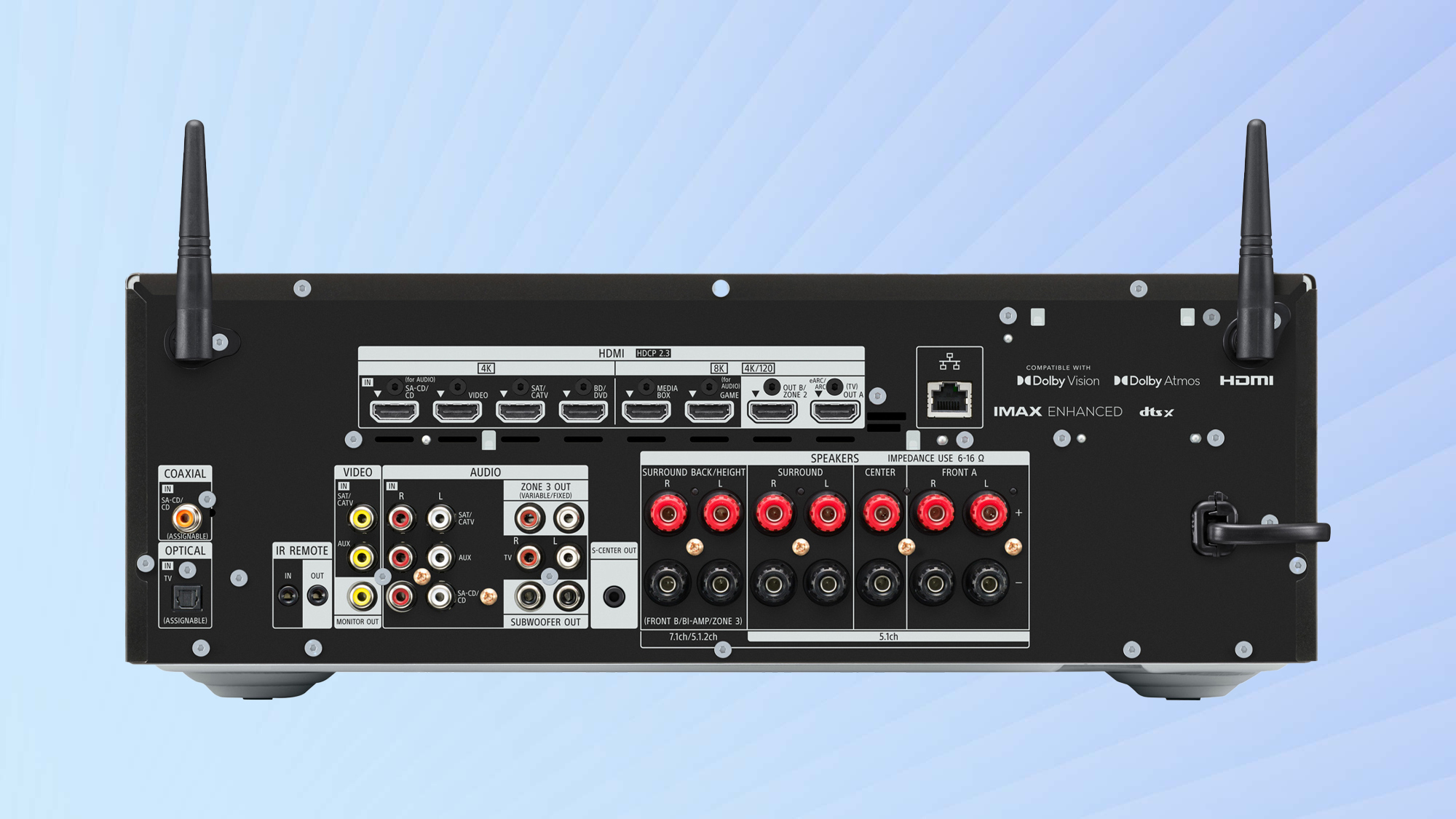
The Sony TA-AN1000 doesn’t stray too far from the design and build of 2017’s STR-DN1080 AVR. The front fascia has lightweight input and volume knobs to the right, and a line of physical buttons below its status window, which allows easy selection of modes including Music, Movie, two channel/multichannel, and 360 Spatial Sound Mapping.
It’s relatively light for an AVR, at 9.4kg.
Connectivity is frugal for this price category. There are six HDMI inputs and two outputs, but one of six is for audio sources only, and just two HDMI ports are 4k 120Hz and 8k capable, required if you’re hooking up a Sony PlayStation 5 or Xbox console.
It’s not a volume monster, but will suffice in a typically living room or studio apartment.
Gamers do at least also benefit from Variable Refresh Rate (VRR) and Auto Low Latency Mode (ALLM) support. The amp is also benign when it comes to passing through Auto HDR Tone Mapping and Auto Genre Picture Mode, from a PS5 to a compatible Sony Bravia TV. HDR10, HLG, and Dolby Vision similarly get a pass.
Additional connectivity includes legacy analog video connections, plus a trio of stereo phono inputs. Digital inputs are limited to one coaxial and the other optical.
In addition to Wi-Fi and Bluetooth, there’s support for Spotify Connect, Google Chromecast, Apple Airplay and Works with Sonos.
The TA-AN1000 comes with a compact remote control, which also offers functional control with contemporary Bravia sets.
With seven channels of amplification onboard, the TA-AN1000 can be configured as a 5.1.2 system, or flatbed 7.1 if you’re not using heights. Sony quotes a power output of 2x 120W (into 6 Ohms), or roughly 85W per channel. It’s not a volume monster, but will suffice in a typically living room or studio apartment.
Sony STR-AN1000/TA-AN1000 review: Features
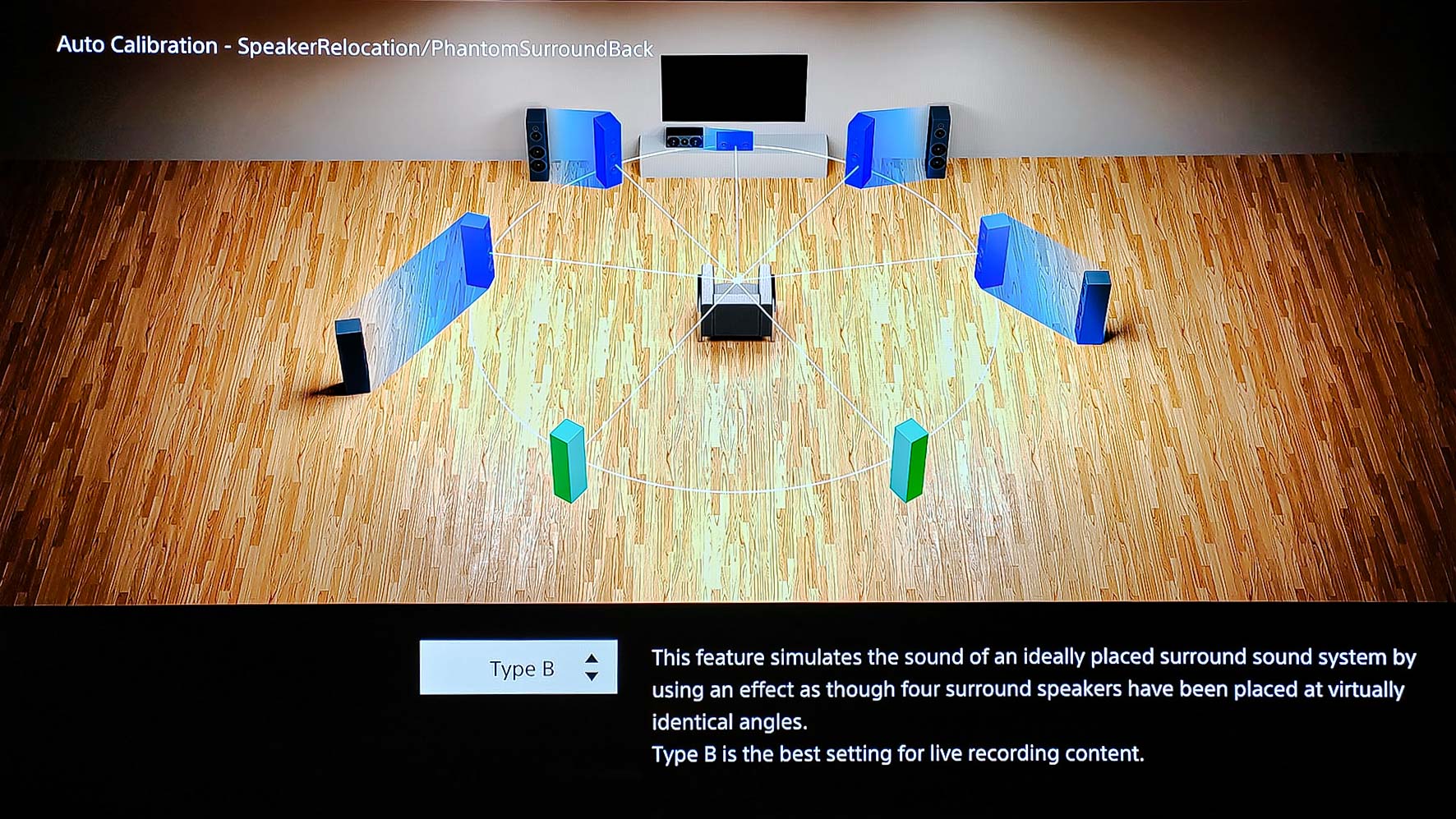
360 Spatial Sound Mapping technology is able to place multiple phantom speakers around a listening room, to better create a sense of sonic immersion.
Initial setup is relatively involved. A small stereo calibration mic is supplied, and you’ll need to build the plastic stand to use it. You also need to manually input listening distances and some room dimensions.
Auto Phase Matching is used to align the phase of different speakers.
New BRAVIA TV owners can also take advantage of Acoustic Centre Sync, in which the TV set itself contributes to the centre channel in a multi-channel environment. The reasoning is that this better locks dialogue to the screen area.
If you’re struggling to place physical speakers, the TA-AN1000 can connect wirelessly to optional speakers, including Sony’s wireless SA-RS5 and SA-RS3S rears, and its wireless SA-SW5 and SA-SW37 subwoofers. The TA-AN1000 will pair with two same model wireless subwoofers simultaneously, rather helpful if you want to reinforce your bass performance.
Sony STR-AN1000/TA-AN1000 review: Performance
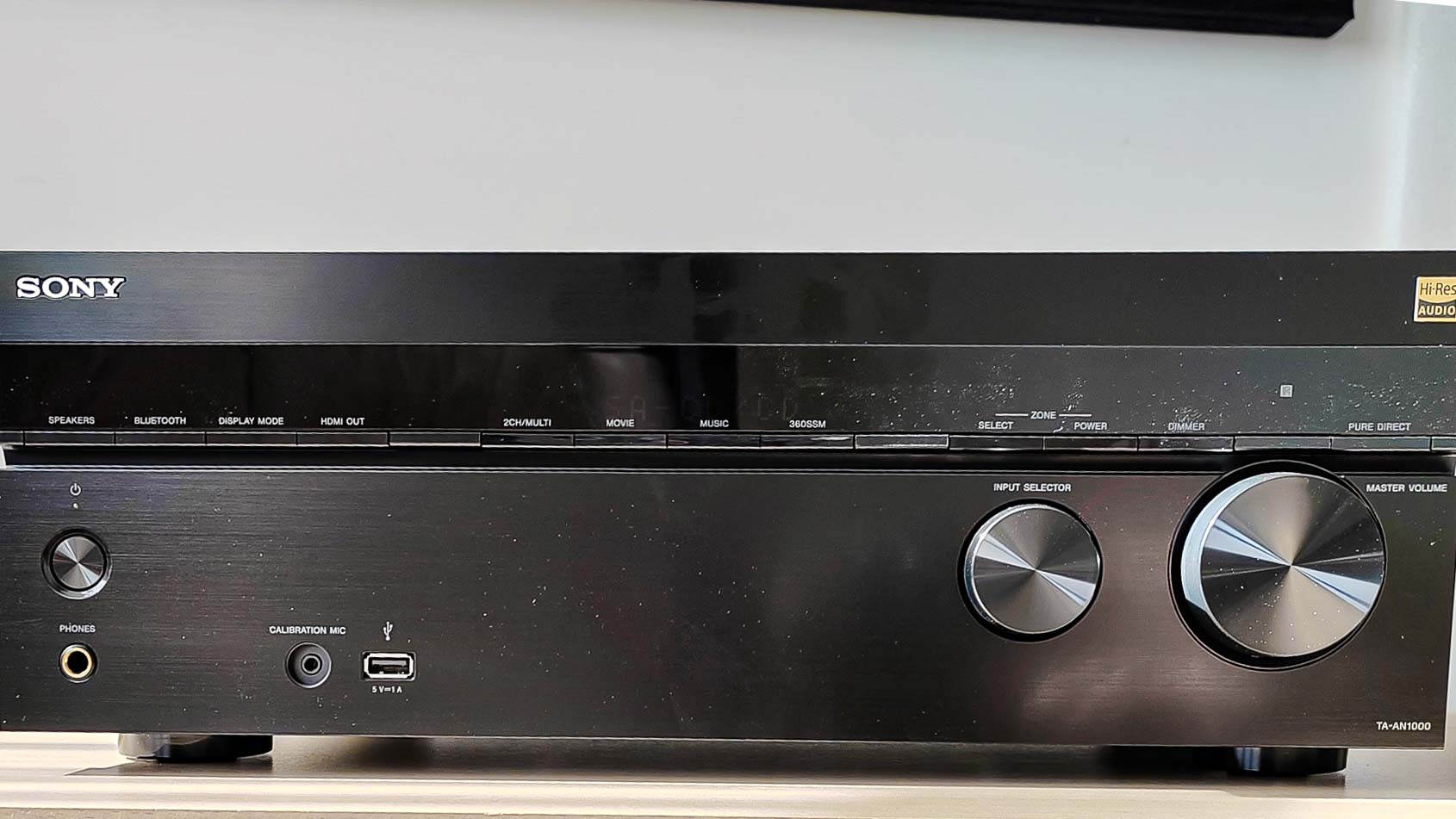
Long story short: the Sony TA-AN1000 is an exciting listen, with smooth sonic steerage of objects and real sense of drama. It sounds bigger than its power specification implies, and handles blockbusters with authority. But take care with the set up.
There are a number of listening modes which can dramatically affect its performance, and it's not immediately apparent what they all do. After exploring the menus for a couple of hours I came to the conclusion that this isn’t an amp for those who would rather keep their home theater hands clean.
I ran the Sony in a 5.1.2 Dolby Atmos configuration. There are only seven channels of amplification on board, so the only other option was a 7.1 layout. The amp/AVR is compatible with both Dolby Atmos and DTS:X codecs, and is IMAX Enhanced certified, but the novel attraction is 360 Spatial Sound mapping, as well as native 360 Reality Audio support.
The latter is an alternate object-based audio standard, for music, which hasn’t gained a lot of traction. That’s a shame because it sounds absolutely fantastic.
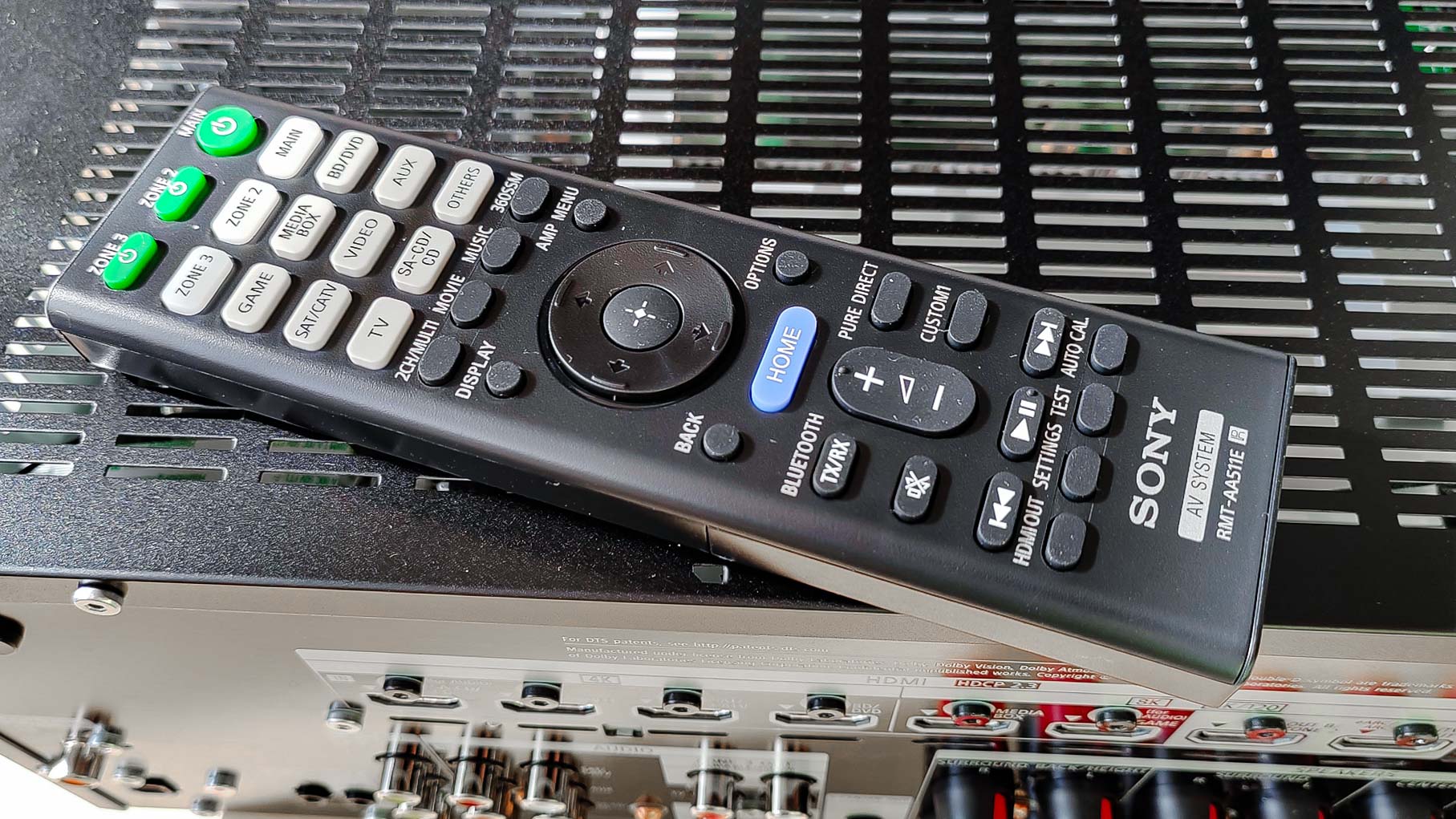
The big win here is Spatial Mapping technology. This effectively provides virtual speakers to fill in the gaps (in my case rears to complement a physical 5.1.2 layout), and applies psycho acoustic processing to subjectively move actual speakers into more immersive virtual positions. You can also apply various filters which affect the tonality of the amp’s performance. I preferred Engineer, said to mimic the sonic characteristics of Sony's R&D test room in Japan.
Tweaking pays dividends. That said, while the TA-AN1000 is perfect with popcorn, I wouldn’t class it as particularly musical. The amplification has a heavy set sound, a weighting from the mid-range down. It slams hard when it needs to, and vocals and dialog have a nicely rounded quality, but it can also sound a little blunt. I would have liked a tad more detail, more nuance.
This doesn’t have the refinement you might expect of an amplifier at this price point.
Sony STR-AN1000/TA-AN1000 review: Verdict
Hands down the best reason to buy this new Sony AV receiver/amplifier is the provision of 360 Spatial Sound Mapping, and all the processing wizardry that comes with it. It works really well, and will be a panacea for those who may have a less than ideally shaped listening room, or lack of Dolby Atmos physical speakers.
However, in terms of build, performance and connectivity, the STR-AN1000 looks overpriced compared to the competition.

Steve has been writing about AV and home cinema since the dawn of time, or more accurately, since the glory days of rival VCR formats VHS and Betamax. He has strong opinions on the latest TV technology, Hi-Fi and Blu-ray/media players, and likes nothing better than to crank up his ludicrously powerful home cinema system to binge-watch TV shows.

